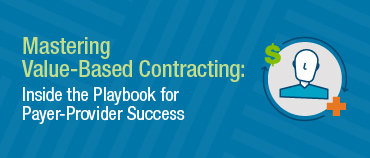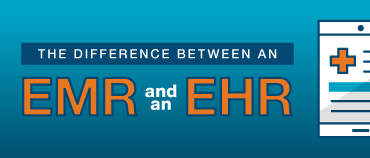Understanding Risk Adjustment
In addition to everything else, today’s practice managers and practitioners need to have a basic understanding of risk adjustment; a statistical process that takes into account the underlying health status and health spending of the enrollee in an insurance plan when looking at their health care outcomes or care costs. A risk adjustment model, specifically, the Health and Human Services-Hierarchical Condition Categories (HHS-HCC), is incorporated in all Medicare risk programs:
Merit-Based Incentive Payment Systems (MIPS) HCC is aimed at risk adjusting for the relative cost of different disease states to:
-
Ensure the appropriate compensation to deliver care
-
Predict future health costs
-
Disincentivize programs to select healthy populations and discard sicker patients
-
Mitigate the impact of adverse selection
-
Improve quality measurement methodology
Medicare’s risk adjustment methodology is the basis for Medicare Advantage (MA) payment rates and a factor in the Multipurpose Senior Services Program (MSSP) Accountable Care Organization’s (ACO) target development. The purpose is to more accurately predict the health cost expenditures of members by adjusting payments based on demographics (e.g., age and gender) as well as health status. Risk-adjustment data is pulled from diagnosis data reported from claims data and medical record documentation from physician offices, hospital inpatient, and outpatient factors. The diagnosis information used for final rates and factors is one year in arrears. For instance, 2016 documented diagnoses will drive 2017 final MA rates and ACO risk score factors. The diagnosis codes are entered into an HCC Model.
To be effective, risk adjustment must be:
-
Clinically meaningful and internally consistent
-
Statistically valid
-
Present an accurate reflection of future costs and quality
-
Incentivize value (promote high quality and cost containment)
-
Prevent ‘gaming’
-
Utilize accessible data bases
How Risk Adjustments Works
The HCC system is built on ICD-10 codes and assigns these codes to 80 hierarchical condition categories. “The codes within a category are similar clinically and in cost prediction,” says Kerry Weiner, MD, MPH, Senior Medical Executive, Avant Healthcare Consulting. Each HCC category is weighted differently, and categories of related diseases can supersede others. For example, he says, “HCC 114 pneumonia with a specific bacterial agent outweighs and supersedes HCC 115, bacterial pneumonia without an agent identified. There will not be HCC scores for both 114 and 115. Generally, unrelated disease HCC scores add up, modified with demographic information, and then adjusted for a few comorbidities. The final sum of all this is a risk adjustment score for a particular patient.”
Risk adjustment factors are designed to enable fair and accurate payments to MA health plans. Payments are made based on a member’s health status, which results in a higher payment for members who are sicker and require more complex care.
There are two keys to successfully capturing the true risk adjustment score of a patient and receiving appropriate credit for the illness level for your patient population:
-
Capture every active diagnosis with as much specificity as possible.
-
Document any complication tied to the primary condition.
Diagnostic and coding requirements for risk adjustment data validation require:
-
Face-to-face encounter
-
Legible signature and credentials of a provider
-
Documentation: Monitoring, Evaluating/examining, Assessing, and Treatment (including prescribing medications, surgery, or other interventions) (MEAT)
“All patients start with no HCC codes in January. This means that they are assumed to be healthy,” says Dr. Weiner, although new diagnoses can be added anytime during the year. He stressed the importance of promptly adding any appropriate diagnoses. He stresses, “if a diagnosis is not added, then it does not exist.” For example, he notes, a patient who had an amputation last year must be documented as an amputee this year in order to receive an appropriate HCC score. Accurate documentation is an area that is ripe for improvement, Dr. Weiner stresses, as currently 40% of meaningful codes are not captured and 15% of eligible patients aren’t evaluated in a given year.
Don’t Ignore: Get Started with HHS-HCC Risk Adjustment Model Software
It is clear that risk isn’t going anywhere. If it makes risk any easier to swallow, says Rich Feifer, MD, MPH, FACP, Senior Vice President, Genesis HealthCare, “Our industry is already at risk. Providers won’t send patients to us anymore if we aren’t managing them well; so, we are already at risk.” The key is to approach risk in a thoughtful, measured way. “The whole idea,” says Dr. Weiner, “is to be confident about the areas you are taking risk in.” He notes that there are some upsides to taking risk. “There are tangible things you can do right away to make a huge difference.”
Start with low-hanging fruit. For example, says Dr. Weiner, “In post-acute care, you can say, ‘What are two or three things that, if we focused on them in the care plan, would make a huge difference?’” One, he says, is end-of-life planning. “Most people don’t want to spend their last days in the hospital. Most would prefer palliative hospice care.” Until recently, practitioners didn’t get paid for these interactions, which can be long and complicated. However, Dr. Weiner notes, “By taking risk, you have the opportunity to do things you know in your heart are right and get reasonably paid for them.”
Dr. Feifer adds, “We can do better with palliative and end-of-life care, as well as advance care planning. There is an enormous opportunity beyond disease management and specific quality measures.” He observes that CMS has worked to broaden billable codes for better billable care—including wellness visits, advance care planning, and non-face-to-face care (care coordination with other providers). Now, he says, “We need providers to do these things more often and more efficiently.”
End-of-life care takes work and time “to get families over the emotional hurdle,” Dr. Feifer admits. However, he says, “The question is not how we can make things easier but how we can use the most efficient and effective process possible.” Toward this end, he observes, “Everyone should be working at the top of their license and have the support necessary to enable them to be as efficient as possible.”
Another bit of low-hanging fruit, Dr. Weiner says, involves addressing polypharmacy—targeting those patients on 20 medications who would do well on half that many or even fewer.
Building on Knowledge, Success for Greater Confidence
All of this may seem new, but practices and practitioners actually have the experience they can build on. For instance, practitioners aren’t starting from scratch when it comes to coding, Dr. Weiner stresses. “They’ve been using ICD-10 codes for years. They know the basic rules of how to do it, but they haven’t learned the subtleties because it never really mattered before. Now it does.” Becoming a coding champ is key. As Dr. Weiner says, “Unless you code it, it doesn’t count.” List every single active problem, every single complication, he suggests. He concludes, “The fact is that you don’t have to change what you do medically. But if you learn this system, you will score higher. If you just learn the basics, you will get credit for those higher acuity patients.”
For the risk-averse, starting small is a good way to gain experience and build confidence. They can use the data to guide their decisions on what types and levels of risk they want to take on. Over time, they can decide if they want to take on more risk in some areas and/or pullback in others. Dr. Feifer says, “If you are performing well in certain areas, it’s because you’re already doing something right. Learn what drove those successes and you can identify best practices you can employ in other areas.”
Dr. Weiner notes, “If you understand how risk is translated into reality in terms of your score compared to others, that is a huge advantage. We aren’t talking about ‘gaming’ the system. We are saying that many providers don’t even know the game so they are scoring poorly.” He suggests, “Someone may be the best athlete in the world; but if they don’t know the game, they won’t play well. It’s like you’ve been playing baseball your whole life; you know the rules, and you’re good at it. Only now, the game is soccer. Once you understand the basics and learn the rules, you’ll play better and score higher.”
Why Bother?
There is no one answer for how to be successful in this world of risk-taking, value-based medicine, Dr. Feifer notes. However, he suggests that this presents a great opportunity to learn and engage in quality improvement. “We need greater provider engagement, systems support and analytics, and alignment of incentives. We need to drive hard on all three.”
Dr. Weiner stresses that when you document and code accordingly, you aren’t penalized because your patients are sicker. “They [Medicare/Medicaid] don’t want physicians to only care for healthy patients, and they understand that sicker patients require more care.” He admits this can be frustrating: “Some practitioners say, ‘I just want to care for patients. Why do I have to do all of this coding?’” However, he notes, “The government isn’t going to reward you for caring for sicker patients unless they have some kind of practical coding system.” In fact, he suggested, “The government is actually trying to help by giving you extra credit for caring for older, sicker patients.”
Of course, Dr. Wiener observes that the HCC system is “far from perfect.” It picks up less than 50% of true risk, he says, “But it’s the best system anyone has come up with to date.” Eventually, he suggests, “when EHRs really connect to each other so the government can have greater access, we could have a wholly different system. We could have smart software to harvest this information automatically. But, currently, there are lots of barriers to this.”
Anyone who thinks that all of these risk-related issues will go away if they just watch and wait, Drs. Weiner and Feifer strongly advise against this strategy. “Value-based based medicine that calls for risk-sharing is here to stay,” says Dr. Feifer. Dr. Weiner adds, “HCC remains an important factor in value-based medicine. And providers will play a significant role and can help a major impact on risk scores.”







.jpg)
